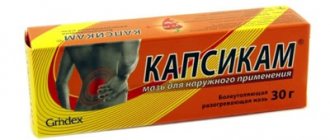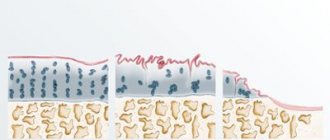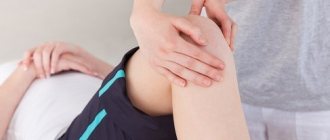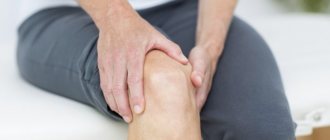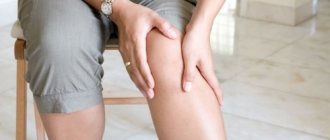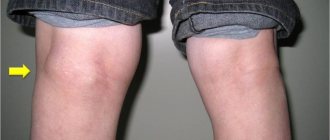- The essence of the method
- Indications
- How is the procedure done?
- Use of stem cells
- How are stem cell injections done?
- Mechanisms of action
- Stem cell transplantation into a joint
Stem cell therapy is developing rapidly in Russia. This is a global trend. Doctors see cellular technologies as the main advances that await medicine in the twenty-first century. They are most widely used in oncohematological practice. Orthopedics and traumatology are in second place in terms of frequency and effectiveness of the use of cell technologies. There are already clinics in Russia whose doctors inject stem cells into the knee joint to treat arthrosis, and achieve good treatment results. They get these cells from adipose tissue.
What are adult mesenchymal stem cells?
Stem cells are undifferentiated cells that have the potential to transform into more specialized cell types. Stem cells are classified as “embryonic” or “adult”. As the name suggests, embryonic stem cells are obtained from human embryos, while adult stem cells are obtained from an adult organism.
Currently, there are more than 70 proven treatments using adult stem cells, while no one uses embryonic stem cells. Scientists have had difficulty controlling the differentiation of embryonic stem cells - these cells have a dangerous property of causing the formation of tumors, including teratomas. Adult stem cells do not have this feature.
Mesenchymal stem cells, or MSCs, are multipotent stem cells that can differentiate into various cell types, including osteoblasts (bone cells), chondrocytes (cartilage cells), and adipocytes (fat cells). This has been proven in ex vivo (outside the body) and in vitro (under artificial conditions) cultivation and in natural conditions. MSCs are obtained from bone marrow, usually from the posterior portion of the iliac crest (“pelvic bone”).
MSCs can differentiate into different cell types, as shown in the figure below.
Description and benefits
Arthrex Angel uses the patient's own biological material to prepare the concentrate in a closed, sterile, disposable system. It is a fully automated system that uses 3 Sensor Technology (3ST) to accurately dispense blood or bone marrow components into PRP/BMC (Platelet Rich Plasma), PPP (Poor Plasma) and RBC (Red Blood Cells) into sterile containers. 3ST technology is unique and allows you to achieve a concentration 18 times higher than the original one.
The main advantage of the system is that the user can set the desired concentration of various elements in the resulting useful product (PRP, BMC or PRF/BMC gel) by changing the centrifugation parameters. This allows you to control the concentration of platelets, leukocytes and red blood cells, while obtaining the desired proportion of elements in the plasma. This is especially important, since for each type of pathology the most effective is a particular concentration of certain elements in the final product.
How are MSCs obtained?
MSCs for injection therapy are collected directly in the office. Stem cells can be obtained from bone marrow (they can also be obtained from fat tissue; see below). First, the area of skin is numbed. Then the pelvic bone is numbed with a larger amount of the drug and a special needle is used to penetrate through the cortex of the bone into the medullary cavity. In most cases, this is a painless procedure. The bone marrow fluid is drawn very slowly into the syringe. Once the syringe contains enough bone marrow fluid, the needle is removed and a bandage is applied.
To watch a short video about the procedure, follow the link: https://www.marrowcelllution.com/main#overview
The entire procedure takes about 15 minutes and is minimally uncomfortable.
It is important to note that if the bone marrow is not collected correctly, most of what is in the syringe is peripheral blood with very few stem cells. In this case, you are paying for an expensive PRP procedure, not a stem cell procedure!
In my practice, I use Arthrex equipment, which is the latest technical achievement in collecting stem cells from bone marrow and adipose tissue and allows us to extract the largest number of stem cells with minimal discomfort for the patient.
The best source of bone marrow stem cells is the iliac crest.
How is the procedure done?
Treatment of joints with belly fat takes place in two stages. First, the doctor takes fat from the anterior fat wall. He sucks it through a small puncture. The procedure is not painful due to the use of local anesthesia or general anesthesia. When choosing a method of pain relief, the doctor takes into account the wishes of the patient.
After collection, the adipose tissue is prepared using a special device. The resulting material is injected into the knee. Fat stays there for a long time, being a source of mesenchymal stem cells.
Advantages:
- minimally invasive surgery that lasts 30 minutes;
- can be performed without general anesthesia;
- no hospitalization required: the patient returns home on the day of the procedure, and then only visits the doctor to perform a dressing;
- since your own fat cells are transplanted, not donor ones, the risk of immune reactions is reduced to zero;
- the adipose tissue is not centrifuged, which allows the greatest number of functional stem cells to be preserved.
How are stem cell injections done?
All stem cell and PRP injections are performed under ultrasound guidance. First, numb the area of skin with a small amount of lidocaine. Then, under ultrasound guidance, we guide the needle to a specific area and inject the stem cells. Ultrasonic control ensures the accuracy and safety of injections. After the injection, patients should avoid axial load on the joints for 24-48 hours (lower leg/foot, knee, hip). However, it is very important that the joint is not completely immobilized. Having movement in the joints after stem cell injection is critical to promoting healing. You will receive more specific recommendations during a face-to-face consultation.
Effects of SVF joint therapy
- The introduction of fat cells into the joint triggers powerful restoration processes in the tissues and intercellular substance. This ensures the regeneration of damaged cells and stimulates the growth of new ones;
- The quality composition, viscosity and elasticity of the lubricant (synovial fluid) filling the joint space increases, which means the friction between the articular surfaces of the bones decreases;
- Restores injured cartilage cells, significantly increasing their shock-absorbing properties and ability to withstand loads;
- Slowing down the processes of degradation and degeneration of articular cartilage, activating metabolic processes in the intercellular matrix;
- Improves homeostasis (constancy of the internal environment of the joint) and local immunity, which leads to the attenuation of long-term disturbing symptoms and chronic inflammation;
- Reduces the inflammatory process. After introducing SVF cells into the joint cavity, the body begins to produce powerful anti-inflammatory substances;
- Relieves pain by reducing friction in the joint, releasing growth factors and biologically active substances produced in tissues.
- Stimulation of neoangiogenesis (formation of new capillaries), which improves microcirculation and oxygen delivery of nutrients to damaged tissues.
- Activates the synthesis of the most important connective tissue proteins (collagen and elastin fibers), making joint tissue more elastic.
Treatment protocol
Before introducing stem cells into the joint, it is advisable to undergo a course of ozone therapy 5-7 days before the injection . This helps prepare the joint for better healing, which stem cells promote.
About 2 weeks after the stem cell injection, a PRP injection is usually given . This helps keep stem cells active. After 2 months, PRP administration can be repeated again.
The field of Regenerative Medicine is rapidly evolving. As such, treatment protocols will continue to improve as physicians strive to find the optimal approach to achieve the best outcome for patients. My experience as a physician, as well as that of colleagues who publish research, helps me continue to improve the treatment protocol.
What diseases can stem cell injections help with?
Stem cell injections are most often used to treat conditions that have failed other, conservative treatments. For example, patients suffering from:
- Arthrosis of the joints
- Chronic partial tears of the rotator cuff
- Permanent partial tendon tears such as tennis elbow, plantar fasciitis (heel spurs), quadriceps and patellar tendon tears
- Partial muscle tears
- Chondromalacia of the patella (patellofemoral syndrome)
Indications for cell therapy
- Deforming osteoarthritis of 2-3 degrees of the knee joint;
- Coxarthrosis stages 2-3 of the hip joint;
- Osteoarthritis of the ankle joint;
- Rheumatoid arthritis;
- Domestic and sports injuries of articular cartilage;
- Degenerative damage to the menisci;
- Osteonecrosis (focal necrosis) of bone;
- Aseptic (avascular) necrosis of the femoral head;
- Osteochondritis dissecans (Konig's disease);
- Chondromalacia of articular cartilage stages 2,3 and 4;
- Damage to the cartilaginous part of the patella;
- Enthesopathies: epicondylitis, supraspinatus tendonitis;
- Partial muscle tissue injuries;
- Partial tears of the rotator cuff.
Are there risks associated with stem cell treatment?
Any injection is potentially at risk as it can cause infection, bleeding, and nerve damage. The risks also depend on the area where the injection is given. However, since your own cells are used, allergies to treatment are excluded! In addition, since the injections are carried out under ultrasound guidance, the risk of damage to surrounding tissue or incorrect injection of stem cells is almost completely eliminated. We will analyze with you all possible risks of treatment. The likelihood of complications occurring is extremely low.
Contraindications
|
|
Sign up for treatment
What is the probability of success?
Studies show an 80-85% improvement, although in some joints, namely the hips, the percentage is not as high. Some patients stop experiencing pain. In case of injuries and diseases of tendons and ligaments, the positive effect, as a rule, lasts for a long time. In the case of joint arthrosis, the duration and severity of the effect depends on the severity of the disease. Regarding arthrosis, my experience is that the knees and shoulders respond better: 80-90% of patients experience improvement. 60-70% of patients with hip arthrosis have a positive reaction.
In my practice, the vast majority of stem cell injections are performed for arthrosis. A much smaller number of injections are given for tendon injuries. (Tendon and ligament injuries respond well to the less expensive PRP procedure, so stem cell treatment is rarely needed).
See “What does the research show?” for more information about the successes.
Will stem cell treatment help grow new cartilage in my joint?
The goal of stem cell treatment is to reduce pain and improve function. Although there is some weak evidence that treatment sometimes results in increased cartilage thickness, it is important to keep in mind that the cartilage covering the surfaces of the joint does not have nerve endings! For example, we often see patients with osteoarthritis of the knee or hip joints, when the joint does not hurt, but signs of pronounced changes are visible on radiographs. Pain with arthrosis is not always associated only with damage to the cartilage - often the source of pain is the surrounding soft tissue structures.
Method 2. Plasmolifting
This method of treating osteoarthritis is effective in the initial stages, although it is still rarely practiced. Autoplasmotherapy is the injection of an enriched patient’s blood product into the joint. The result is the return of mobility, restoration of cartilage tissue. Pain and discomfort disappear half an hour after the procedure. The optimal number of injections is 3-5 per course.
Blood products are safe for the human body, they are hypoallergenic and do not cause side effects. However, such manipulations need to be repeated frequently. Plasmolifting comes to the rescue when other methods of influence are impossible, for example, in case of an allergy to a prosthesis, a synovial fluid substitute based on hyaluronic acid. By the way, the synthetic analogue of the Noltrex endoprosthesis is also hypoallergenic, but lasts much longer than blood products.
Plasmolifting is the treatment of arthrosis with blood products
Will stem cell treatment help avoid joint replacement?
This is a frequently asked question. In the early stages of arthrosis, stem cell treatment can stop further joint destruction. However, in advanced stages of arthrosis, as noted above, the goal of treatment is to reduce pain and improve function. In some cases, arthrosis is so severe that stem cell treatment is not a viable option.
For severe or advanced osteoarthritis, stem cell treatment may delay eventual joint replacement, but it is rarely a procedure that eliminates this need. Some patients are unable to undergo surgery due to concomitant diseases. Other patients simply do not want joint replacement surgery under any circumstances. In these cases, stem cell therapy may be a viable treatment option, but it is not a permanent solution in these situations - the procedures will have to be repeated periodically (usually every 2-3 years).
Causes of arthrosis
The causes of arthrosis (colloquially known as “salt deposits”) are any factors that destroy articular cartilage. These are excess weight, liver and kidney diseases, disturbances in the normal composition of the blood, the effect of carcinogenic factors, bad habits, infectious processes, injuries, and unfavorable environmental conditions. For example, arthrosis of the knee joint appears more often than others precisely because of constant stress and frequent bruises, so you should not delay the treatment of even minor injuries. Treatment of arthrosis of the knee joint, the symptoms of which are severe pain, is a particularly pressing problem for overweight women, due to the increased level of stress leading to rapid wear of joint tissues. By the way, when treating arthrosis of the knee joint, therapy for varicose veins of the lower extremities is often necessary.
Lipofilling
In the case of tears and inflammation of tendons and muscles such as the rotator cuff, forearm, Achilles and foot tendons, as well as limb muscles, stem cell treatment may not be very effective because the liquid stem cell solution does not tend to stay in the tear - it flows out. To avoid this, I often combine stem cells with a fat concentrate to create a gel that fills the defect and allows for more effective treatment.
The situation is similar with more advanced stages of joint arthrosis: fat acts as a solution that helps keep platelets in place and helps activate them to more effectively trigger their growth. Think of it like a garden trellis that helps keep vines in place. In fact, for moderate and advanced stages of arthrosis, the standard treatment method is to combine a solution of stem cells with fat.
Fat is taken from the patient's abdomen, buttocks, and fat deposits on the waist or hips using a gentle liposuction method (the amount of fat collected is usually not enough for a cosmetic effect). The fat is processed while waiting for stem cells and other support cells to transform into fat. The resulting gel fills tendon/muscle tears and helps maintain constant contact with the joint surfaces in case of arthrosis.
What do the studies show?
As of June 2021, there were more than 430 studies in various stages of MSC development and use (and more than 4,450 “stem cell” studies), according to www.clinicaltrials.gov.
Clinical applications of stem cells have greatly outpaced research support for such uses. This doesn't mean stem cells don't help. This means that research has not yet caught up with application. Today, most research on the use of stem cells in orthopedic diseases has been done in the knee. Many studies are focused on the use of stem cells in combination with surgery.
The following is a brief, and certainly not exhaustive, review of research into the use of autologous adult stem cell injections for the treatment of various orthopedic diseases.
Osteoarthritis of the knee joint
In a 2013 study by Koch et al, 18 middle-aged men and women received a single knee injection (Kellgren grade 3 or 4) using fat stem cells in combination with PRP. The patients' condition was assessed 3, 12 and 24 months after injection. There was a significant improvement in pain and function scores. In addition, repeat MRI after 24 months showed an increase in cartilage thickness compared with the result of MRI performed before treatment. (Koch et al. Mesenchymal stem cell injections improve symptoms of knee arthrosis. Arthroscopy. 29(4);2013:748-755.)
In 2014, Kim et al examined patients who suffered from grades 1-4 knee osteoarthritis. Subjects were treated with bone marrow-derived MSCs in combination with lipofilling. There was a significant reduction in pain and improvement in function. The severity of arthrosis plays a significant role - more severe disease does not respond as well to treatment.
Joe and colleagues gave injections into the knees of 18 patients suffering from arthritic pain with high levels of adipose stem cell derivatives. They compared pain and function before and after treatment. They also performed a follow-up elective arthroscopy to see the actual effect of the treatment on the cartilage tissue. The results of the study showed improved function and pain in the knee joint without side effects and a reduction in cartilage defects through restoration of hyaline articular cartilage. (Joe et al. Intra-articular injection of mesenchymal stem cells for the treatment of osteoarthritis: a proof of concept clinical trial. Stem Cells. 2014; 32(5):1254-1266.)
In 2013, Orozco et al gave one injection of bone marrow stem cells into arthritic knees of 12 patients who had failed conservative treatment. Patients showed rapid and progressive improvement, which increased from 65 to 78% at 1 year. In addition, a 1-year MRI study showed a significant reduction in areas of low cartilage content (average 27%) with improved cartilage quality in 11 of 12 patients. (Orozco et al. Treatment of knee osteoarthritis with autologous mesenchymal stem cells: a pilot study. Transplantation. 2013; 95(12):1535-1541.)
Meniscal damage
In 2014, Vangsness compared the effectiveness of stem cell injections and hyaluronic acid (HA) injections in 55 patients. Patients underwent knee arthroscopy, during which damaged parts of the meniscus were removed. 7-10 days after surgery, each patient received one injection of MSCs. Patients were followed up to assess general knee condition and clinical outcome for two years. Tests include serial magnetic resonance imaging (MRI).
There is evidence of meniscus regeneration and pain relief in the knee joint after treatment with mesenchymal stem cells. In addition, patients with arthritic changes who received MSC treatment experienced a significant reduction in pain compared to patients who received GC treatment. These results support studies of human mesenchymal stem cells for significant knee tissue regeneration and protective effects. (Vangsness et al. Adult human mesenchymal stem cells delivered to the knee by intra-articular injection after partial medial meniscectomy: a randomized, double-blind, controlled trial. Journal of Bone and Joint Surgery. 15 Jan 2014;96(2):90-8. )
What changed after the operation
The last BMCP transplantation was on October 27. What changes in the patient's condition occurred over three weeks?
“The pain is gone,” says Mikhail Sudas. – I already walk 18 thousand steps and every day I increase the distance to reach 15 km. I bend and straighten my knee without any problems. I climb the stairs carefully, I’m just psychologically afraid to put more strain on my leg, and the doctor advised me to be careful. The muscle under the knee became hard. To the touch, I feel that the cartilage in a place where it was almost gone.

